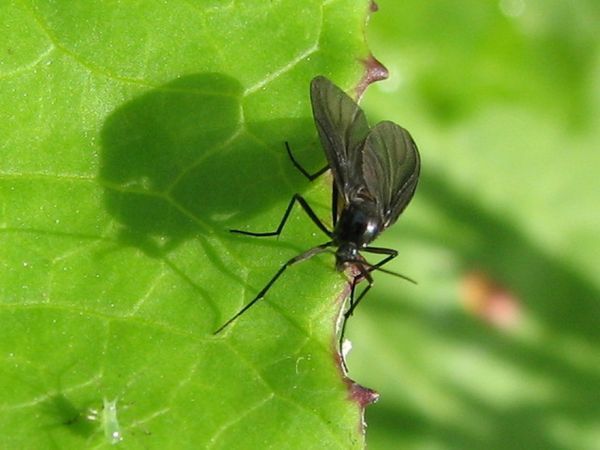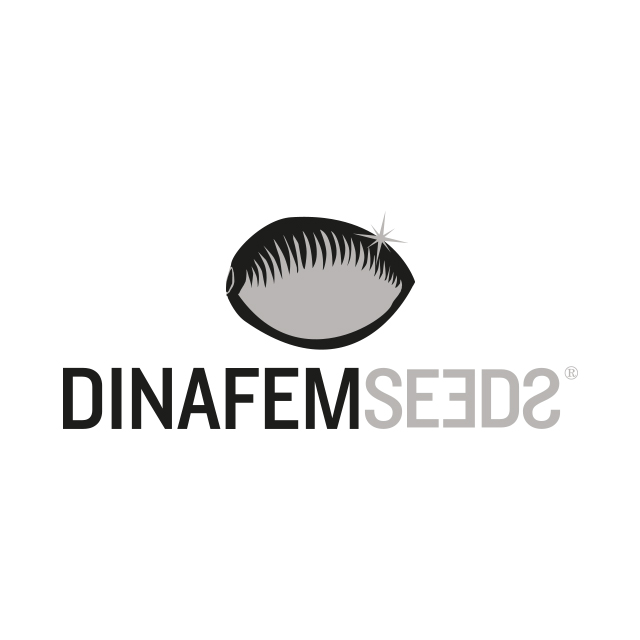- The cold is here and now it´s time for the indoor growing season. So, store the fruits of your outdoor cultivation in your pantry and turn your attention to growing rooms and/or closets.
- But be careful, because if outdoors you should be on your guard to defend your plants from numerous enemies, don't think you can let it down when cultivating cannabis indoors.
- Today we introduce to you an insect that regularly attacks marijuana plantations, complicating life for growers, which is the substrate fly.
- Although it does not usually cause serious problems, you should be alert, especially if your system is hydroponic, because this annoying guest loves damp and watery settings. Here we have the keys to detect and combat them.

What is the substrate fly?
The black fly or Sciridae (sciarid) is also known by other names: soil fly, black fly, and fungus or mulch fly. In its larval stage the substrate fly usually does not exceed 4-5 mm in length, with a translucent body and a black head. In its adult stage these flies are grey-black, 2-4 mm long, and have thin and elongated legs.
The substrate fly's life cycle
After the male and female mate, the latter lays some 200 eggs in the substrate, which, after about three days or so, hatch the larva. In this first phase, the fly larvae live and feed on the soil, where they spend their first three weeks of life, after which they form the cocoon in which their metamorphosis occurs. Once converted into adults (winged flies) they emerge at the surface and remain at the bottom of the plant, feeding on decaying fungi and plant matter.
How to tell whether your cannabis plants have substrate flies
As mentioned above, this insect thrives in moist environments and tends to be found at the base of the plants, especially if this area is usually wet, so that's where you should look.
Damage: This tiny enemy infests the substrate of the plant in its first larval stage, feeding on small capillary roots and damaging the main ones. As a result, the plant grows weaker and its metabolic functions slow. The damage they do to the roots leads to the emergence of fungi such as Fusarium and Pythium, especially if the substrate is usually very wet. Substrate flies do not usually cause serious problems for large plants, but they can be dangerous for seedlings.
Although it is not among the most lethal and dangerous pests, you should not underestimate this insect, as if you do not catch it in time, and the plague spreads, it can become a problem. These are the symptoms that may tell you that your plants have become infected with the substrate fly:
- The first symptom: the flies get stuck to anti-insect strips.
- Another early symptom, and the most obvious: you see some of them flying near your plants.
If you did not initially notice the presence of this insect, and it has already become a serious pest, you will realise that:
- The plant grows weaker
- The leaves turn pale
- Adult flies get stuck on the buds in the same way that they do on insect-catching strips
- Fungal infections (especially affecting the roots) appear
How to prevent the substrate fly
If you want to get started cultivating cannabis, a golden rule to keep in mind is that an ounce of prevention is worth a pound of cure. It is always preferable to take measures to prevent the occurrence of pests that can attack your cannabis plants than combat them once they have already shown up. Here is a series of steps you can take in your crop to prevent the appearance of the substrate fly:
- Do not overwater. Prevent your crop from soaking too long.
- Keep an eye on humidity levels
- Cover the substrate with vermiculite to make it difficult for females to lay their eggs
- Place yellow sticky strips to catch adults, and check them daily (this measure also serves to detect other pests, such as whitefly)
- Spray with neem (also on the substrate's surface)
How to fight fungi gnats
If this pest has already appeared on your cannabis crop, we recommend fighting it with:
- Products containing B. thuringiensis (Bt) or Bacillus thurgiensis israelensis (Bti), bacteria that live in the soil and are used as a biological alternative to conventional pesticides. These two strains of bacteria can be used in this case for the biological control of the substrate fly in the larval stage. You can find these bacteria under different brand names. With a quick search on the Internet you will be able to find several products.
- Neem meal: very effective against pests that develop in the substrate. To apply this product correctly, irrigate the substrate like always and then apply the meal, spreading a uniform layer on the soil's surface. Neem meal prevents the flies from landing on the surface to lay their eggs, while also stopping the larvae from hatching, thereby interrupting their life cycle.
- Introduce predatory species into your substrate: Hypoaspis geolalepumites and the nematode Steinernema feltiae



Comments from our readers
There are no comments yet. Would you like to be the first?
Leave a comment!Did you like this post?
Your opinion about our seeds is very important to us and can help other users a lot (your email address won't be made public).